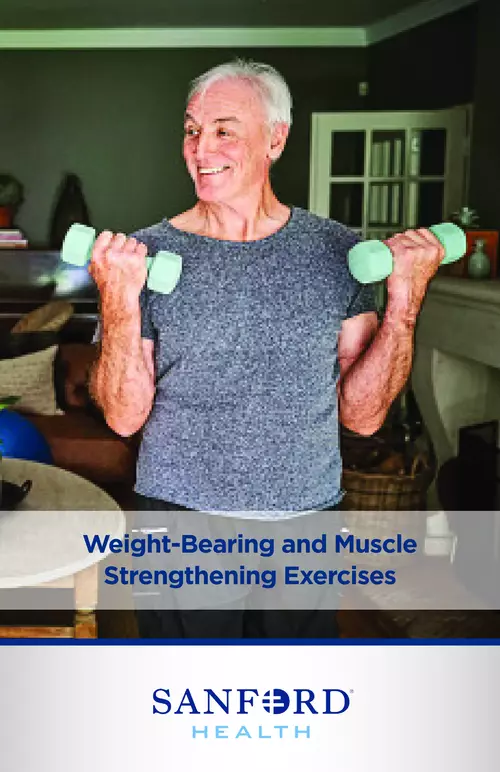
Weight-Bearing and Muscle Strengthening Exercises - Sanford Health
These are good activities to help with bone strength. Weight-bearing exercise means your feet and legs support your body's weight. Some examples are: ? Walking.
adsPart of the document
Weight-Bearing and Muscle
Strengthening Exercises
1
Introduction
Weight-bearing and resistance exercises have many bene?ts. ?ese
are good activities to help with bone strength.
Weight-bearing exercise means your feet and legs support your
body"s weight. Some examples are:
Stair climbing
Walking as little as 3 to 5 miles a week can help build your bone
health. For your overall health, most experts recommend that
everyone get a total of 30 minutes each day, 5 to 7 days a week.
45 minutes to an hour is even better.
Resistance exercises work against the weight of another object. e
resistance helps strengthen muscle, build bone and can reduce the
risk of fractures. Some examples are using:
Resistance tubing
Sports, like bicycling and swimming, are great for your heart and
lungs. ese are not weight-bearing exercises for osteoporosis but
they are still great exercises to participate in. at is because you are
being held up by something other than your feet and legs, such as,
the bicycle or the water.
Some exercises may increase your risk of breaking a bone, especially
for persons with osteoporosis or low bone density. Make sure your
doctor approves of the exercise program you have chosen.
2
Remember:
Check with your doctor or physical therapist (PT) before
starting any new exercise program or activities.
Avoid movements that require bending forward from the waist
or too much twisting of the spine, such as, touching your toes
or doing sit-ups.
A little muscle soreness lasting for 1 to 2 days after new or
increased exercise movements is normal. Exercises should
not hurt while you are doing them or cause soreness for more
than 1 to 2 days afterwards. Discuss pain or soreness that goes
beyond 1 or 2 days with your doctor.


